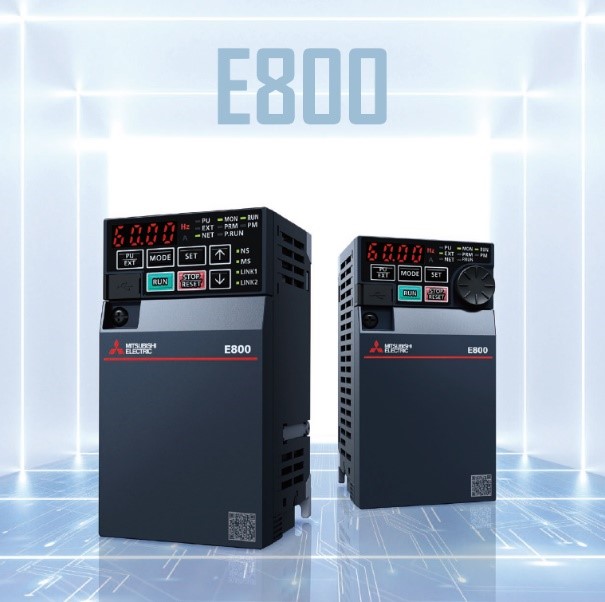Economical and environmentally friendly - FR-E800 series inverters

The FR-E800 series inverters manufactured by Mitsubishi Electric are equipped with a number of solutions to improve the energy efficiency of the drive systems. One of these is the absolutely unique advanced optimum excitation control (AOEC) mode, which allows energy savings of up to 20% compared to the traditional energy-saving mode used in a typical frequency inverter.
How does Optimum Excitation Control help save energy?
Excitation losses, also known as core losses or iron losses, are a type of energy loss that occurs in electric motors due to the magnetic properties of the motor core materials. These losses are related to the magnetic flux inside the motor and are independent of the motor load. They can be divided into two main types:
2. Hysteresis losses: Hysteresis losses are caused by reversed magnetisation in the iron core of the motor. When the magnetic field changes, the magnetic domains in the core materials constantly align and re-align, resulting in energy dissipation. Hysteresis losses depend on the magnetic properties of the core material and the frequency of the magnetic field.
3. Eddy current losses: Eddy currents are circulating currents induced in the core material by an alternating magnetic field. These currents flow in closed loops and encounter resistance, causing power dissipation. The eddy current losses depend on the electrical conductivity of the core material, its thickness and the frequency of the magnetic field.
Both hysteresis and eddy current losses contribute to the excitation losses of an electric motor. These losses manifest themselves as heat inside the motor and reduce its overall efficiency. However, it is worth noting that the excitation losses generally remain relatively constant regardless of the load or speed of the motor. Therefore, at low speeds and under low load, the ratio of excitation losses to overall losses increases. In general, although excitation losses contribute to the total losses of an electric motor, they are usually a small part compared to other losses such as copper and mechanical losses at nominal conditions, but under under underload conditions they account for a sizeable percentage of the total losses.
This is where the Optimum Excitation Control mode, which is used on Mitsubishi Electric's FR-E800 and FR-F800 series inverters, comes to the rescue. This mode allows the drive to intelligently divide the current vector applied to the motor into two components - the current responsible for excitation and the current responsible for maintaining torque. While the 'torque' current is a non-negotiable value, the component responsible for magnetisation can be reduced to a safe level allowing the motor to continue running smoothly.
Finally, one conclusion - inverters operating in applications driving a fan and most pumps operate underloaded absolutely the vast majority of the time. If the fan is running at half the nominal speed then it is operating at about 15% underload. Therefore - by choosing the FR-E800 and tuning the drive optimally to control the pump or fan, you can expect average savings of around 20% in most cases compared to the traditional control mode used in this type of application.
